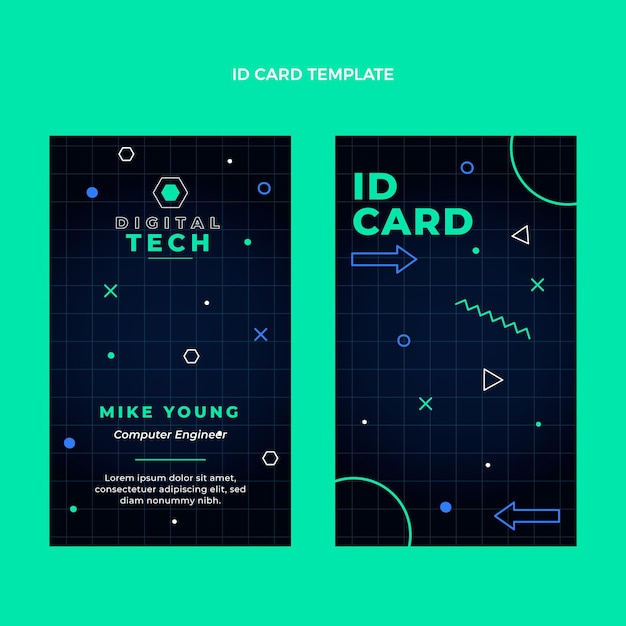Micro-credentialing in Higher Education: Is It Worth the Investment?

The rise of micro-credentialing in higher education reflects a shift towards skills-based learning, offering focused, flexible alternatives to traditional degrees, but its value as an investment depends on factors like industry recognition, career goals, and institutional quality.
The landscape of higher education is constantly evolving, and one of the most significant developments has been the rise of micro-credentialing in higher education: is it worth the investment? Traditionally, a college degree was seen as the golden ticket to a successful career, but the emergence of micro-credentials poses a compelling question: are these focused, skill-based certifications a worthwhile investment for students and professionals alike?
Understanding Micro-credentialing
Micro-credentialing is a relatively new approach to education that focuses on smaller, more specific sets of skills compared to traditional degree programs. These credentials can take various forms, such as certificates, badges, or digital endorsements, and are often offered by universities, colleges, and even industry-specific organizations.
Defining Micro-credentials
At its core, a micro-credential validates that an individual has mastered a particular skill or competency. Unlike a degree that covers a broad range of subjects, micro-credentials zoom in on specific areas of expertise. This targeted approach makes them particularly appealing for professionals looking to upskill or reskill quickly.
How Micro-credentials Differ from Traditional Degrees
The key difference lies in the scope and duration. A bachelor’s degree typically takes four years of full-time study, while micro-credentials can be earned in a matter of weeks or months. Furthermore, micro-credentials are often designed to be more flexible and accessible, catering to working adults who need to balance education with other commitments.

The modular nature of micro-credentials also allows learners to stack them, potentially building up to a more comprehensive qualification over time.
- Focus: Micro-credentials are highly focused on specific skills.
- Duration: They are typically shorter than traditional degree programs.
- Flexibility: Often designed to be flexible and accessible for working adults.
- Stackability: Can be stacked to build up to larger qualifications.
Micro-credentials represent a shift towards more agile and responsive education, aligning learning outcomes with the immediate needs of the job market. This makes them an attractive option for individuals seeking to gain a competitive edge in today’s rapidly evolving workforce.
The Benefits of Micro-credentialing
The rising popularity of micro-credentialing is due to the distinct advantages it offers over traditional forms of education. These benefits span across various aspects, from cost-effectiveness to career advancement, making it a compelling option for many.
Cost-Effectiveness and Time Efficiency
One of the most significant advantages of micro-credentials is their affordability. Traditional degree programs can be expensive, often requiring students to take out substantial loans. Micro-credentials, on the other hand, typically cost less and can be completed in a fraction of the time.
Enhanced Career Prospects
Micro-credentials can significantly enhance career prospects by validating specific skills that employers are actively seeking. This is particularly valuable in industries where technology and job requirements are constantly changing.
For professionals looking to advance in their current roles or transition to new fields, micro-credentials can provide the necessary skills and credentials to stand out in a competitive job market.

Furthermore, the recognition of micro-credentials by employers is growing. Many companies are now incorporating micro-credentials into their training and development programs, signaling their acceptance and value in the workplace.
- Faster Upskilling: Allows professionals to quickly acquire new skills.
- Improved Job Mobility: Enhances opportunities for career advancement and transitions.
- Increased Earning Potential: Validates skills that can lead to higher salaries.
Micro-credentialing offers a practical and efficient way to acquire in-demand skills, boost career prospects, and demonstrate a commitment to lifelong learning. As the job market continues to evolve, the value of these credentials is likely to increase even further.
The Challenges and Criticisms
Despite the numerous benefits, micro-credentialing is not without its challenges and criticisms. It is essential to address these concerns to gain a balanced perspective on its value.
Lack of Standardization and Recognition
One of the primary challenges is the lack of standardization across micro-credentialing programs. The quality and rigor of these programs can vary significantly, leading to concerns about their credibility and recognition by employers.
Potential for “Credential Inflation”
There is also the potential for “credential inflation,” where the proliferation of micro-credentials could dilute their value over time. If too many credentials flood the market, employers may find it difficult to distinguish between high-quality and low-quality certifications.
Another criticism is that micro-credentials may not provide the depth of knowledge and critical thinking skills that are developed through traditional degree programs.
- Quality Assurance: Ensuring consistent standards across programs is crucial.
- Employer Acceptance: Overcoming skepticism and gaining widespread recognition is essential.
- Depth of Knowledge: Addressing concerns about the breadth of learning offered.
Addressing these challenges is crucial to ensuring that micro-credentialing maintains its value and credibility as a viable alternative to traditional forms of education. Efforts to standardize programs, promote employer recognition, and enhance the depth of learning will be key to its continued success.
Industry Perspectives on Micro-credentialing
Understanding the perspectives of various stakeholders, including employers, educators, and learners, is crucial in assessing the true value of micro-credentialing. Their views provide insights into the practical applications and perceived benefits of these credentials.
Employer Expectations and Needs
Employers are increasingly seeking candidates with specific, job-ready skills. Micro-credentials offer a way for job seekers to demonstrate that they possess these skills, making them more attractive to potential employers. Some companies are even partnering with educational institutions to develop micro-credentialing programs that align with their specific needs.
Educator and Institution Roles
Educational institutions play a vital role in the development and delivery of micro-credentialing programs. Many universities and colleges are now offering micro-credentials as a way to attract new students and provide relevant training to working professionals.
Learner Experiences and Outcomes
Ultimately, the value of micro-credentialing depends on the experiences and outcomes of learners. Many learners report increased confidence and improved job prospects after earning micro-credentials. However, it is essential to ensure that these credentials lead to tangible career benefits.
Learners should carefully consider their career goals and the specific skills they need to achieve them when choosing a micro-credentialing program.
- Alignment: Ensuring programs align with industry needs.
- Quality: Maintaining high standards of instruction and assessment.
- Outcomes: Measuring the impact of micro-credentials on learner employment and earnings.
By considering the perspectives of employers, educators, and learners, we can gain a more comprehensive understanding of the value and potential of micro-credentialing in higher education.
Successful Examples of Micro-credentialing Programs
Examining successful micro-credentialing programs can provide valuable insights into how these credentials are being used effectively in various industries. These examples showcase the diverse applications and potential of micro-credentialing.
Case Studies in Technology
In the technology sector, micro-credentials are often used to validate expertise in specific programming languages or software platforms. For example, a micro-credential in Python programming or data analysis with R can demonstrate that an individual has the skills needed to work in these areas.
Healthcare Micro-credentials
In healthcare, micro-credentials are used to train professionals in specialized areas such as telehealth, electronic health records, and patient care coordination. These credentials can help healthcare providers stay up-to-date with the latest technologies and best practices.
Business Micro-credentials
Micro-credentials in business cover a wide range of topics, including project management, digital marketing, and data analytics. These credentials can help professionals develop the skills they need to succeed in today’s competitive business environment.
Successful micro-credentialing programs often involve partnerships between educational institutions and industry employers.
- Industry Relevance: Programs that align with current job market needs.
- Hands-On Training: Opportunities for practical experience and application of skills.
- Employer Recognition: Credentials that are widely recognized and valued by employers.
These examples demonstrate that micro-credentialing can be a valuable tool for individuals and organizations looking to enhance their skills and stay competitive in today’s rapidly changing world.
Future Trends in Micro-credentialing
As the field of higher education continues to evolve, micro-credentialing is poised to play an increasingly important role. Several trends are shaping the future of these credentials, influencing their design, delivery, and recognition.
Integration with Traditional Education
One trend is the integration of micro-credentials with traditional degree programs. Some universities are allowing students to earn micro-credentials as part of their degree requirements, providing them with additional skills and credentials to enhance their career prospects. Stackable credentials will play an important role here.
Increased Use of Technology
Technology is also playing a significant role in the future of micro-credentialing. Online platforms, virtual reality, and augmented reality are being used to deliver more engaging and effective learning experiences. These cutting-edge technologies allow for new educational opportunities.
The use of blockchain technology to verify and secure micro-credentials is also gaining traction, providing employers with a reliable way to validate an individual’s skills.
- Personalization: Tailoring programs to meet individual learning needs.
- Accessibility: Expanding access to education for diverse learners.
- Global Recognition: Promoting the acceptance of micro-credentials worldwide.
Micro-credentialing is expected to become a more integral part of the higher education landscape. By embracing these trends, educators and employers can harness the power of micro-credentials to drive innovation and create new opportunities for learners.
| Key Aspect | Brief Description |
|---|---|
| 🎯 Skill-Focused | Micro-credentials validate specific skills meeting industry needs. |
| ⏱️ Time-Efficient | Shorter completion times compared to traditional degrees. |
| 💰 Cost-Effective | Generally more affordable than full degree programs. |
| 📈 Career Boost | Enhance career prospects by validating in-demand skills. |
Frequently Asked Questions
▼
A micro-credential is a certification validating mastery in a specific skill or competency, often more focused and shorter than a traditional degree. They are designed to demonstrate expertise in niche areas.
▼
Unlike traditional degrees, micro-credentials focus on specific skills and are completed in shorter timeframes. They also offer greater flexibility, often catering to working professionals seeking targeted training.
▼
Yes, recognition of micro-credentials by employers is growing. Many companies now include them in training, development programs, or look for them during hiring to demonstrate specific skill sets.
▼
The advantages include cost-effectiveness, time efficiency, enhanced career prospects, and the ability to quickly upskill or reskill. Micro-credentials offer a practical and targeted approach to learning.
▼
Challenges include a lack of standardization, potential for credential inflation, and ensuring the depth of knowledge is comparable to traditional education. Maintaining quality is crucial for their continued credibility.
Conclusion
The rise of micro-credentialing presents both opportunities and challenges for higher education and the workforce. While they offer numerous benefits such as cost-effectiveness and career advancement, it is important to address issues related to standardization and quality to ensure micro-credentials maintain their value. Ultimately, whether micro-credentialing is worth the investment depends on individual goals, industry recognition, and the quality of the program.





